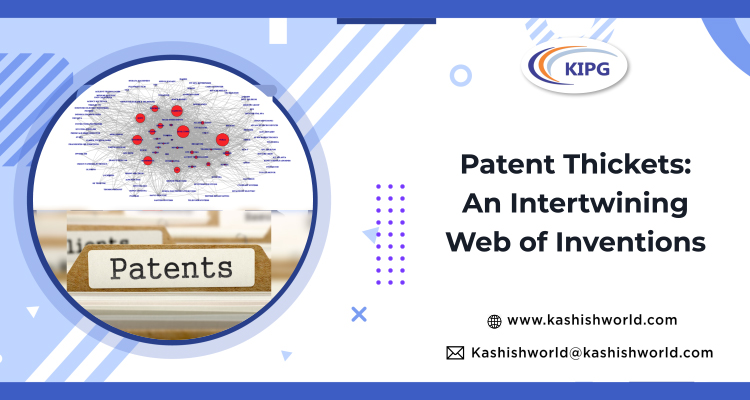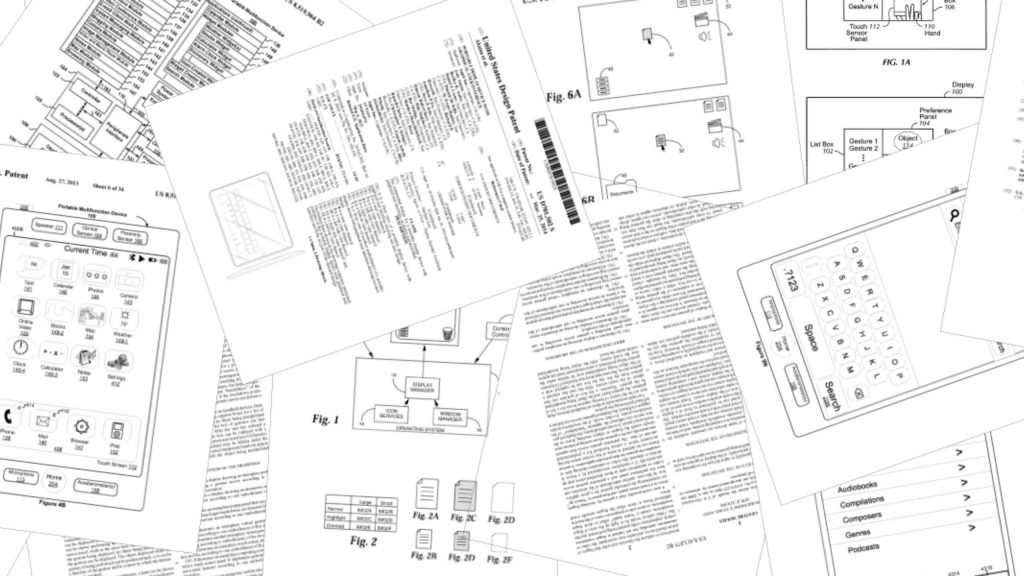
What are Patent Thickets?
In the words of Carl Shapiro, an American economist, a patent thicket is “a dense web of overlapping Intellectual Property Rights that a company must hack its way through to commercialize new technology.” Some industries face the issue of patent thicketing more than others since few are regulated by fewer or single patents. For instance, the pharmaceutical industry usually has a product coming from a single patent that protects a molecule. However, in some other industries like the telecommunication industry, there are intertwined technologies protected by several patents. Consider a cell phone covered by at least 2,50,000 patents, including LCD, antennas, processors, batteries, etc. In such complex environments, it is necessary to gather access to all surrounding technologies to enable the protection of that individual cell phone.

Origin of the Defensive Strategy
Earlier in 1856, a group of entities jointly acquired a dominant position by patenting sewing machines, forming the first patent pool in the world that continued until 1877. Then, a company named Draper acquired an authoritative patent position for loom temples and consequently began a long-term practice of employing aggressive use of patent thickets. Since then, entities have formed multiple patent thickets in the last 150 years.

One of the earliest sectors to have adopted this strategy of ‘mutual non-aggression’ came to be witnessed in the semiconductor and computer industries leading to software companies obtaining several ‘defensive’ patents.
Even though the origins can be traced to 1856, it was in the 1970s that the term ‘patent thicket’ came to be used in common parlance when Xerox dominated the photocopier industry. These defensive thickets substantially decreased Research and Development (R&D) incentives for many upcoming inventors; however, they came as an advantage to those who became a part of it, reduced the transaction costs, and created a vertical monopoly.
Do Patent Thickets Prevent Innovation?
- Patent thickets significantly disrupt innovation since the smallest components are owned by individual proprietors or independent companies that make the process of obtaining patents an uphill battle.
- They increase the scope and number of patent litigations.
- They complicate the process of negotiating licensing agreements due to an increase in the number of parties to a single transaction.
- They weaken the inventive drive since they also encourage patent-ification of all small and, therefore, innumerable inventions and products.
- They increase the cost of a patent transaction since newer patent holders are encouraged to seek prior approvals of proprietors of all small components incorporated in the invention.
- They reduce the scalability of profits.
- They potentially decrease the incentive to innovate.
- The cost of the end product is ultimately heightened with patent thickets.
Thickets: A Burden on Common Man
Five of the top ten selling drugs in the United States of America include Humira, Enbrel, Keytruda, Revlimid, and Imbruvica. A total of 584 Patent Applications have been obtained after their initial Food and Drug Administration (FDA) approval. For example, on Humira itself, there are additional patents on the autoinjector device and a separate patent for the ‘firing button’ on the device. It is a typical case of patent thicketing.

The cost of these transactions is ultimately borne by the common man. Therefore, they heavily obstruct medical aid at reasonable prices. It also means they are a welcoming step for anti-competitive practices hindering the ability to negotiate.
Furthermore, it also promotes the evergreening of certain patents and creates a monopoly in the hands of a few. Again, let us take the example of Humira. The patent covering Humira had expired way back in 2016; however, the other 132 drugs thicketing the drug expire not before 2034. It implies the entry of biosimilars and generics as well. Yet, in the case of Mayor and City Council of Baltimore v. AbbVie Inc, 7th U.S. Circuit Court of Appeals, No. 20-2402, it was held that AbbVie did not block competition by erecting a thicketed fence.
Conclusion: Resolving the Issue and Untangling the Web
The following solutions and approaches can be adopted to prevent patent thicketing:
- Patent Pools: A patent pool requires “an agreement between two or more patent owners to pool their patents and license amongst themselves or to a third party on pre-determined licensing terms.” This strategic outlook was also first adopted amongst the sewing machine entities resulting in the creation of a ‘Sewing Machine Combination.’ Since a patent pool may enable innovation in the early stages of a new invention being developed and harnessed, in the later times, it may lead to a serious threat of the creation of cartels that operate on supremacy and monopolization by regulating the market process, controlling demand and supply, etc. To prevent this, the USA has implemented a broad parameter, i.e., in the USA, the entire patent pool system has been brought under one parameter – blocking (essential) or complementary patents belong to a pool, while substitute or competing patents are to remain separate.
- Proactive Role of Courts: Courts should take proactive measures and stringent steps to accord protection to the IPRs of individual inventors. Therefore, the specialized knowledge of experts should be used to understand and adjudicate patent-related matters.
- Tougher Scrutiny to Grant Patents: The Patent System was introduced and implemented to inspire innovation and creativity, thereby enabling the growth of the economy while granting a monopoly for a limited time in return. However, the ordeal of granting patents way too easily for trivial innovations and unsubstantial products or processes has made the patent system discourage breakthrough innovations and ideas. The examiners and registrars should pay great attention to the state of the art and the knowledge of a person skilled in the art before deducing whether or not a patent shall be granted.
- Cross Licensing: Cross licensing agreements that license present portfolios and future inventions reduce transaction costs. To quote a few examples, Intel entered into many broad cross-licenses with other companies such as IBM, agreements between Microsoft and JVC, which came into being in 2008, and the agreement between Hewlett-Packard and Xerox to amicably settle their outstanding patent disputes.

